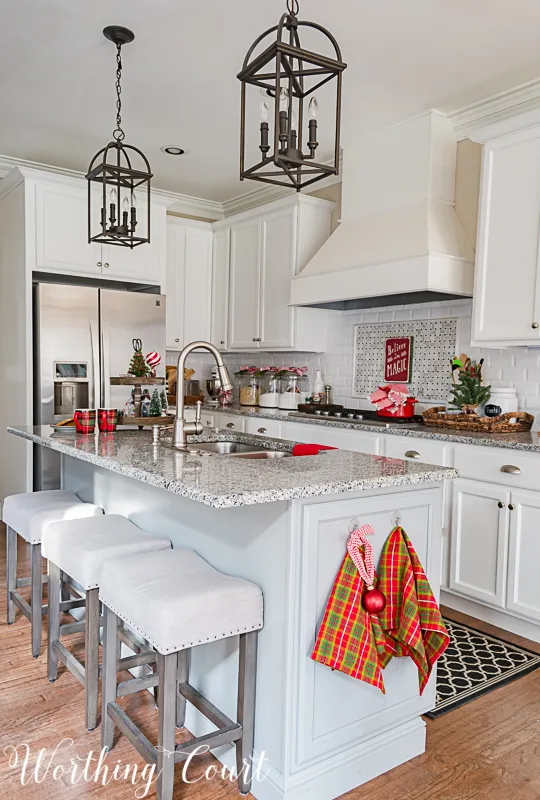Understanding the Fundamentals of Kitchen Decor
Kitchen decorating is far more than just picking out pretty things; it’s about creating a space that reflects your personality, meets your functional needs, and enhances your daily life. A well-designed kitchen is the heart of the home, where meals are prepared, memories are made, and gatherings take place. This guide, “Kitchen Decorating 101,” offers a comprehensive approach to transforming your kitchen into a stylish and efficient space. We will delve into various aspects, from defining your style and choosing the right color palette to selecting essential furniture and optimizing the layout. The goal is to empower you with the knowledge and inspiration to elevate your kitchen decor.
Define Your Style and Preferences
Before you start any decorating project, take the time to define your personal style. Consider what you like and dislike about kitchens you’ve seen, whether in magazines, online, or in friends’ homes. Do you lean towards modern minimalism, rustic charm, classic elegance, or something else entirely? Create a mood board with images, colors, and textures that resonate with you. This will serve as a visual guide throughout the design process, helping you make cohesive and informed decisions about every element of your kitchen decor. Understanding your preferences is the first and most crucial step to creating a kitchen that truly feels like yours.
Analyzing Your Current Kitchen Space
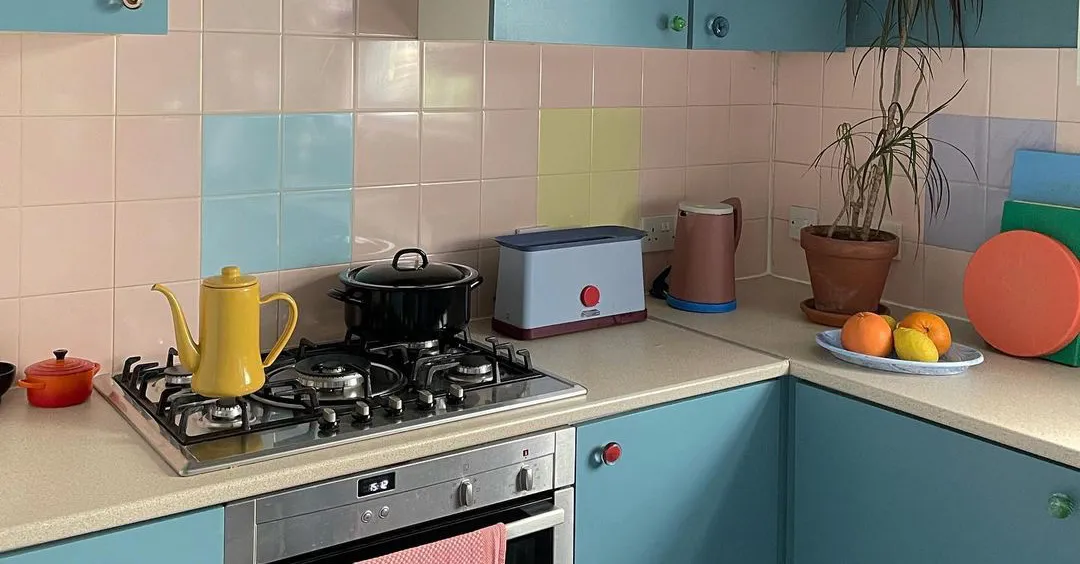
A critical step in successful kitchen decorating is a thorough assessment of your current space. Start by taking measurements of your kitchen, including the dimensions of walls, windows, doors, and existing appliances. Observe the natural light in your kitchen at different times of the day. Identify any structural limitations, such as load-bearing walls or plumbing locations. Assess the existing features, such as cabinets, countertops, and flooring, and determine if they are in good condition or need to be replaced. This analysis will help you understand the possibilities and constraints of your space, guiding your design choices and preventing costly mistakes.
Identifying Problem Areas and Opportunities
Once you’ve analyzed your kitchen, pinpoint problem areas and identify opportunities for improvement. Does your kitchen lack storage space, natural light, or adequate counter space? Are the appliances outdated or inefficient? Do you find the layout awkward or difficult to work in? Make a list of all the issues you want to address. Simultaneously, consider the potential of your space. Do you have a beautiful view, a large window, or a unique architectural feature that you can highlight? Identifying both the challenges and the potential will help you develop a targeted and effective decorating plan that maximizes your kitchen’s functionality and aesthetic appeal.
Choosing the Right Color Palette
The color palette you choose for your kitchen will significantly impact its overall feel and appearance. Colors have the power to influence mood, create visual interest, and define the character of a space. When selecting colors for your kitchen, consider the size of the room, the amount of natural light, and your personal preferences. Neutral colors like white, gray, and beige are timeless and versatile, creating a sense of spaciousness and allowing you to add pops of color through accessories. Bold colors like blue, green, and red can make a statement, but should be used strategically to avoid overwhelming the space. A well-chosen color palette is essential for creating a cohesive and inviting kitchen environment.
The Psychology of Color in Kitchens
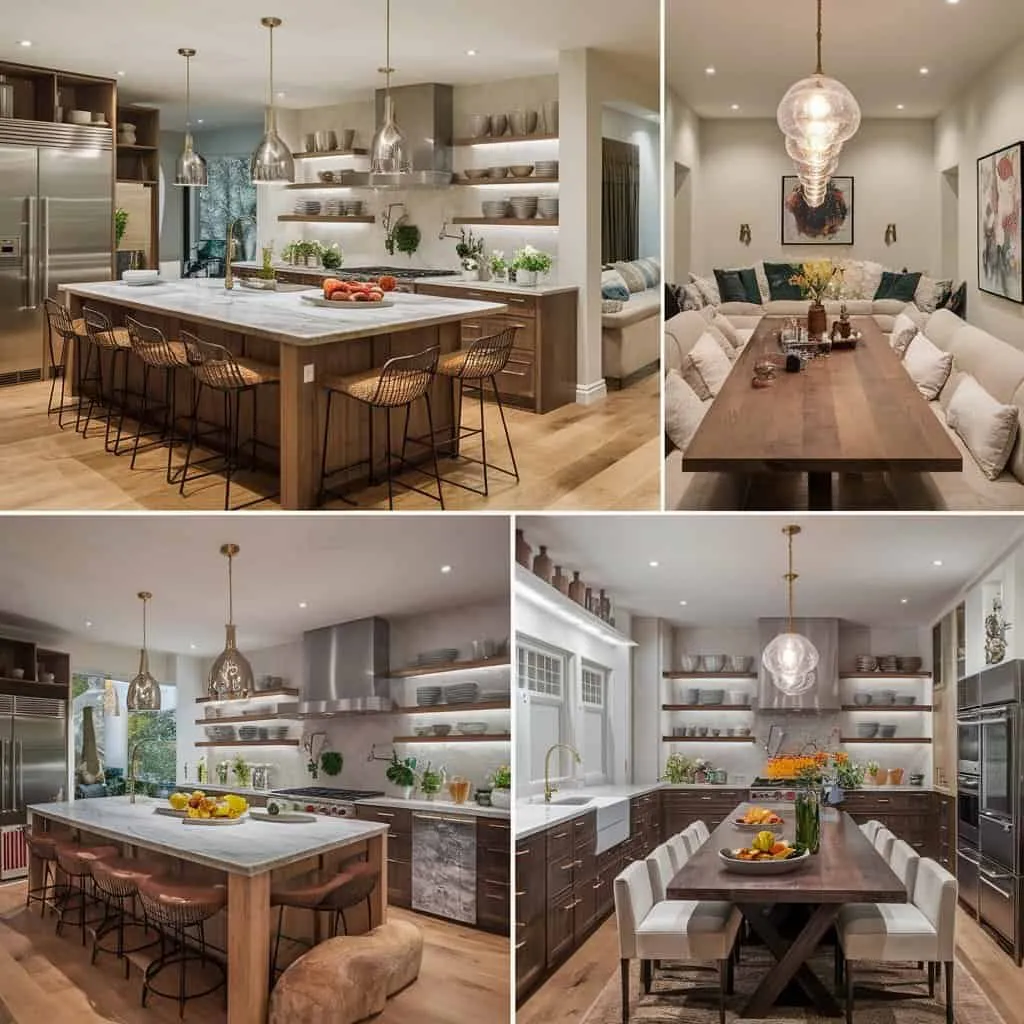
Understanding the psychology of color can help you make informed decisions about your kitchen decor. Colors evoke different emotions and can affect how you perceive a space. For example, white and light colors can make a small kitchen feel larger and brighter, creating a sense of cleanliness and freshness. Blue is often associated with calmness and serenity, making it a good choice for creating a relaxing atmosphere. Green symbolizes nature and tranquility, evoking a sense of freshness and well-being. Yellow can stimulate appetite and create a cheerful environment, while red is energetic and can add a touch of drama. Consider the effect you want to achieve and choose colors that align with your goals.
Popular Color Schemes for 2024
Trends in kitchen decor are constantly evolving, and staying up-to-date can provide inspiration for your own design. For 2024, popular color schemes include warm neutrals combined with natural wood tones, creating a cozy and inviting atmosphere. Earthy greens and blues are also trending, offering a connection to nature and promoting a sense of calm. Another popular choice is a monochromatic palette with varying shades of a single color, creating a sophisticated and cohesive look. Consider these trends as a starting point and adapt them to your personal style and the unique characteristics of your kitchen.
Implementing Color Effectively
Once you’ve chosen your color palette, think about how you will implement it in your kitchen. Consider the color of the walls, cabinets, countertops, and backsplash. Use the 60-30-10 rule, which suggests using a dominant color (60%), a secondary color (30%), and an accent color (10%) to create a balanced and visually appealing space. Paint is an easy and affordable way to introduce color, while cabinets can provide a significant impact. Use accessories like artwork, dish towels, and plants to add pops of color and personality. Experiment with different combinations and consult color swatches to ensure that the colors work well together and complement your overall design vision.
Selecting Essential Kitchen Furniture and Fixtures
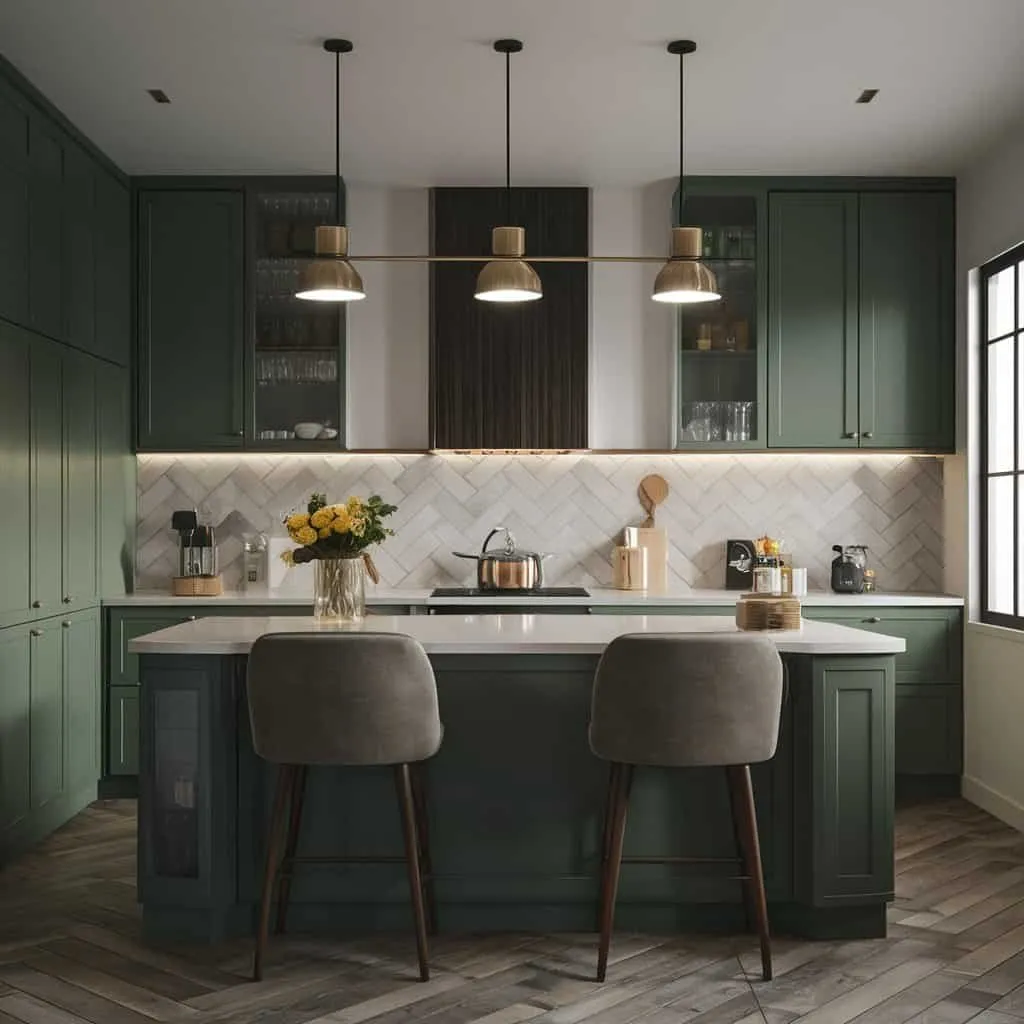
The furniture and fixtures you choose for your kitchen are fundamental to its functionality and aesthetic appeal. Your selection of cabinets, countertops, appliances, and lighting will significantly impact how you use and experience the space. Invest time in researching and selecting high-quality items that meet your needs and enhance your kitchen’s design. Consider the size of your kitchen, the amount of storage you require, and your budget. Make sure that all of your choices are cohesive and reflect your overall style. Thoughtful selection of furniture and fixtures will ensure that your kitchen is both beautiful and practical.
Choosing the Right Cabinets and Countertops
Cabinets and countertops are two of the most prominent elements in any kitchen. Cabinets provide essential storage and greatly influence the overall look of the room. Consider the style, material, and finish of your cabinets. Choose from a range of styles, from modern and minimalist to traditional and ornate. Materials include wood, laminate, and painted finishes. Countertops provide workspace for food preparation and add to the design aesthetic. Popular countertop materials include granite, quartz, marble, and solid surface options. Consider durability, maintenance, and your budget when selecting the right cabinets and countertops for your kitchen. The right choices will provide both style and functionality.
Picking Appropriate Appliances and Lighting
Appliances and lighting are crucial for the functionality of your kitchen. Select appliances that fit your cooking habits and the size of your kitchen. Consider energy efficiency, features, and design when choosing appliances like refrigerators, ovens, dishwashers, and microwaves. Lighting is essential for both task and ambient illumination. Combine overhead lighting, such as recessed lights or pendant lights, with task lighting, such as under-cabinet lights or spotlights, to ensure adequate illumination for all activities. Consider dimmable lights for creating different moods and enhancing the overall ambiance of your kitchen. The proper selection of appliances and lighting will significantly enhance the functionality and beauty of your kitchen space.
Considering the Functionality of Each Element
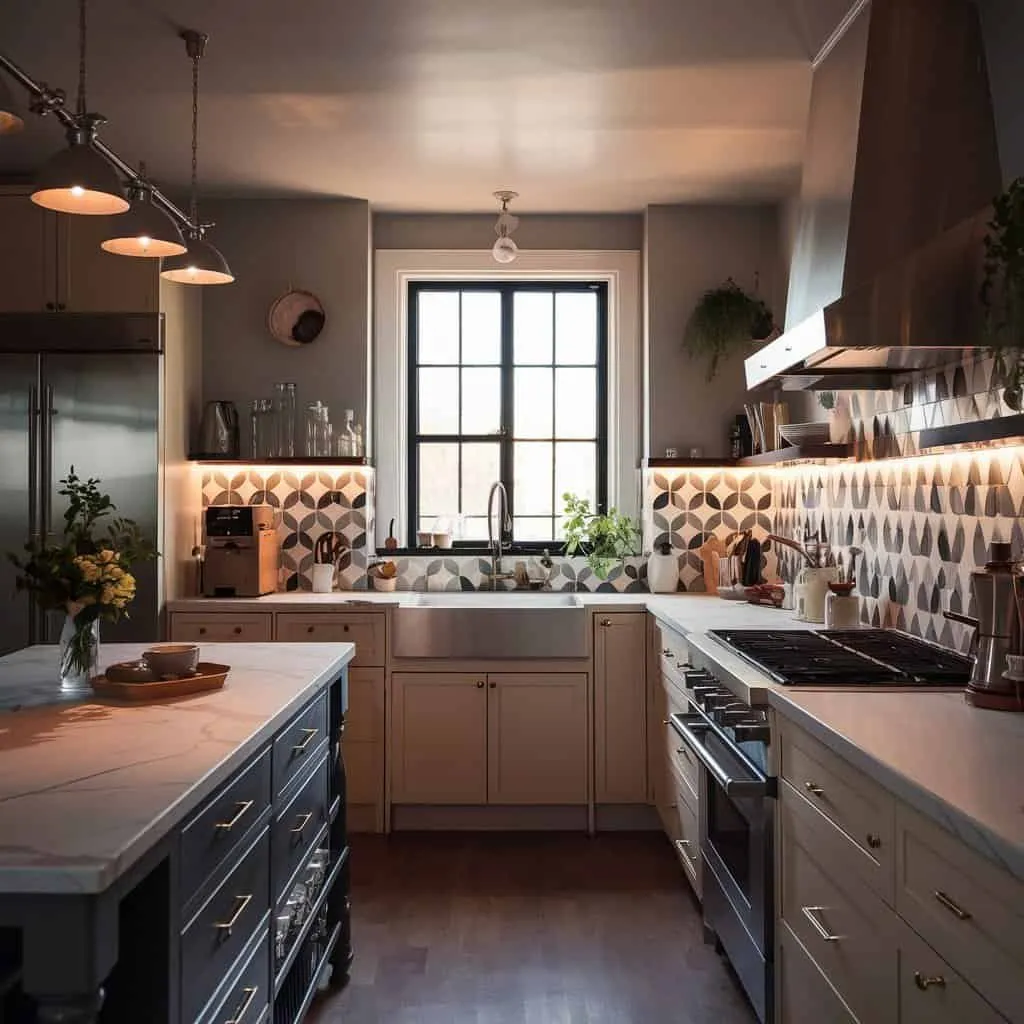
When selecting furniture and fixtures, always prioritize functionality. Ensure that cabinets offer sufficient storage space and are organized efficiently. Select countertops that are durable, easy to clean, and provide ample workspace. Choose appliances that meet your cooking needs and are energy-efficient. Lighting should provide enough illumination for all tasks, from food preparation to dining. Consider the workflow of your kitchen and how each element contributes to efficiency. By prioritizing functionality, you will create a kitchen that is not only beautiful but also a joy to use every day.
Accessorizing Your Kitchen for Enhanced Aesthetics
Accessories are the finishing touches that bring personality and style to your kitchen. They can transform a functional space into a warm and inviting environment that reflects your unique taste. By carefully selecting decorative items and personal touches, you can create a kitchen that feels both stylish and comfortable. Consider the colors, textures, and patterns of your accessories, and how they complement the overall design. Accessories can include everything from artwork and dish towels to plants and decorative bowls, allowing you to express your creativity and make your kitchen feel like home.
Adding Decorative Items and Personal Touches
Introduce personality and character into your kitchen through decorative items and personal touches. Display artwork that you love, whether it’s paintings, prints, or photographs. Add decorative bowls, vases, and trays to your countertops or shelves. Use dish towels and kitchen linens in colors and patterns that complement your decor. Incorporate plants to bring life and freshness to your kitchen. Display cookbooks and other items that reflect your interests and hobbies. Personal touches are what make your kitchen unique and inviting, so be sure to include items that reflect your personality and style.
Choosing Accessories That Complement Your Style
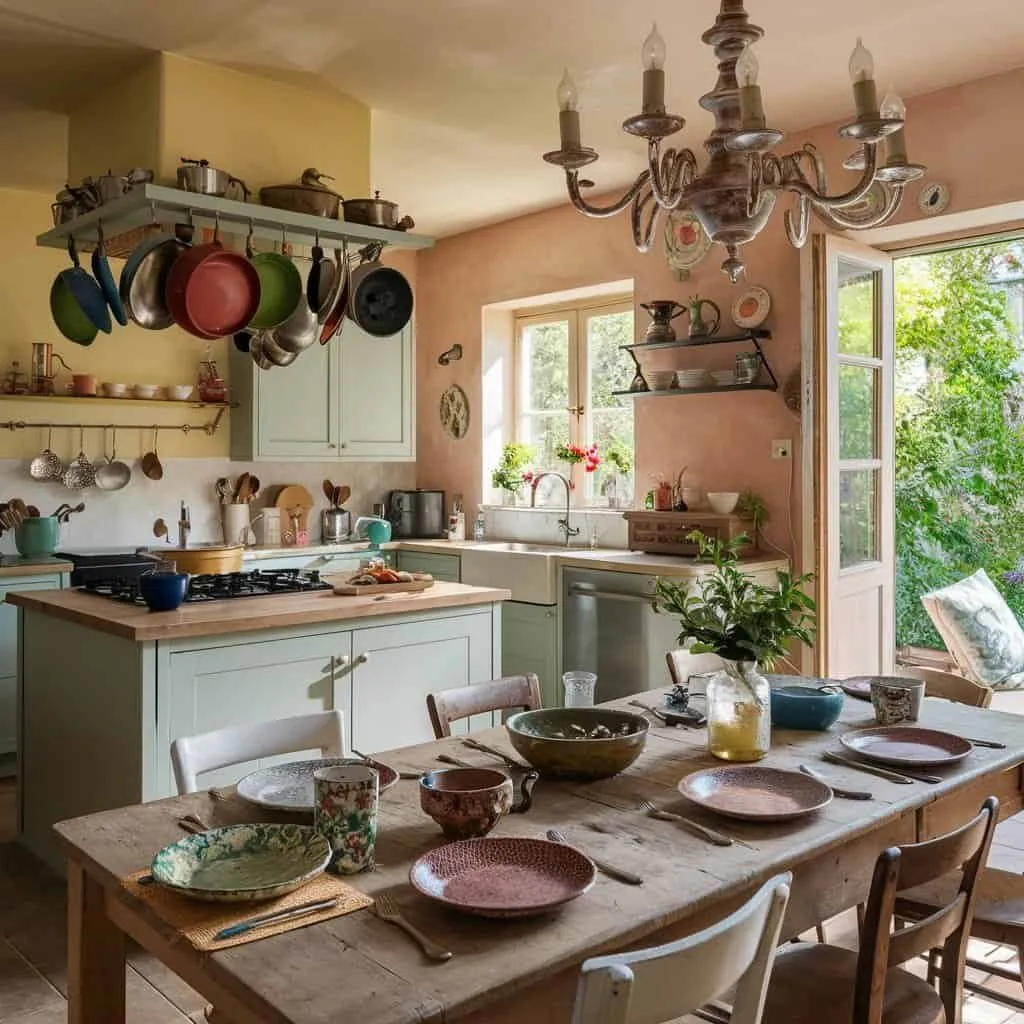
When choosing kitchen accessories, make sure they complement your overall style and design. If you have a modern kitchen, consider sleek, minimalist accessories. For a rustic kitchen, choose accessories with natural materials and textures. For a classic kitchen, consider elegant and timeless pieces. Consider the color palette of your kitchen and choose accessories that incorporate those colors or provide a contrasting accent. Mix and match different textures and patterns to add visual interest. Ensure that the accessories you choose create a cohesive and harmonious look.
Arranging Accessories to Enhance Visual Appeal
The way you arrange your kitchen accessories is just as important as the accessories themselves. Group items together to create visual interest. Vary the heights of your accessories to add dimension. Use open shelves to display items that you want to showcase. Arrange your accessories in a way that is both aesthetically pleasing and practical. Avoid cluttering your countertops or shelves. Remember that less is often more; carefully selected and arranged accessories can make a significant impact on your kitchen’s overall look and feel. Don’t be afraid to experiment until you find an arrangement that you love.
Optimizing Kitchen Layout and Flow
The layout and flow of your kitchen are critical for creating an efficient and enjoyable workspace. A well-designed layout minimizes steps and maximizes convenience, making cooking and meal preparation a pleasure. Consider the different zones of your kitchen, such as the cooking zone, the cleaning zone, and the food preparation zone. Ensure that each zone is logically placed and that the workflow between zones is smooth and efficient. By optimizing your kitchen’s layout and flow, you will create a space that is both functional and a pleasure to use.
The Importance of Workflow in Kitchen Design
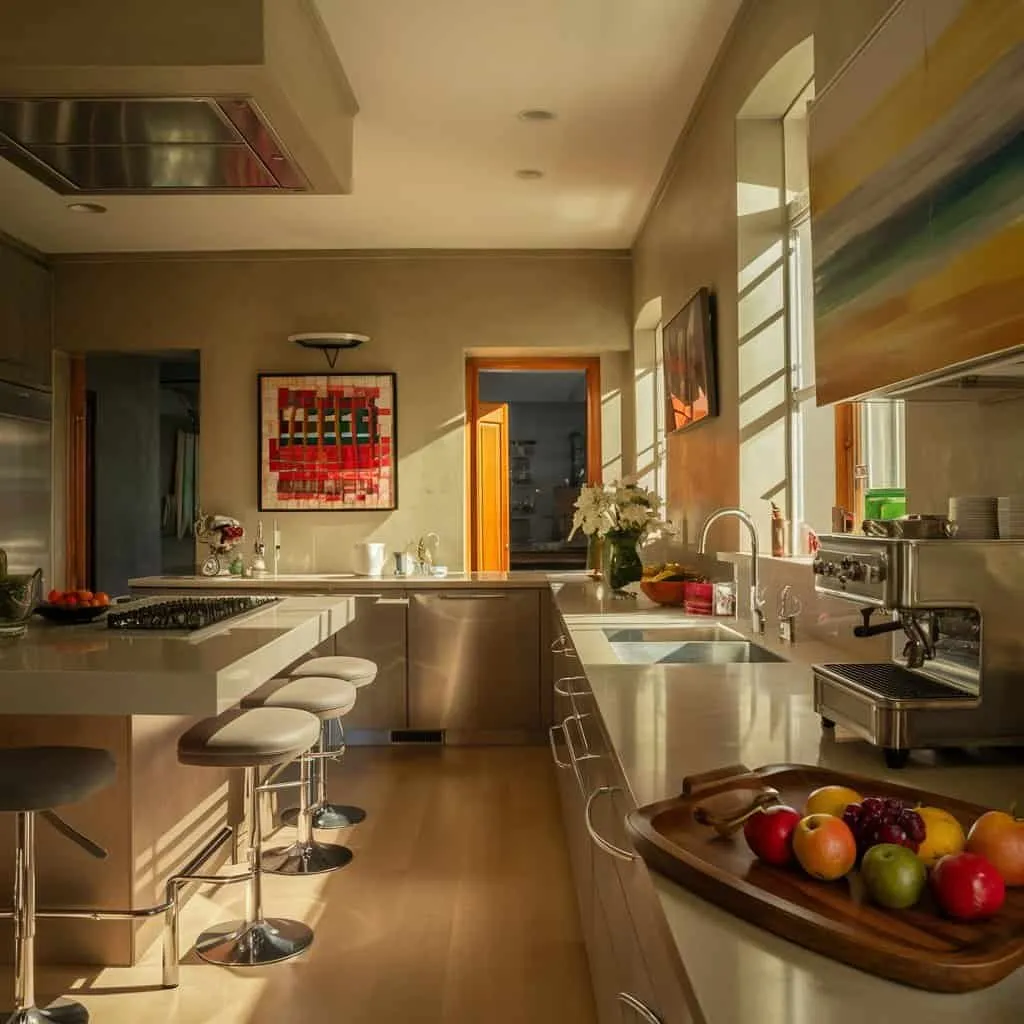
Workflow is the movement of food and tasks within your kitchen. In kitchen design, a well-planned workflow can save time and effort. The most common kitchen layout follows the working triangle which connects the sink, refrigerator, and cooktop. Make sure the path between these points is clear and unobstructed. Consider how you use your kitchen. Are you a frequent baker, or do you primarily cook meals for your family? Customize your layout to your specific needs, such as incorporating a prep sink near the cooking area or a dedicated baking center. An efficient workflow minimizes steps and enhances your overall kitchen experience.
Ergonomics and Kitchen Design
Ergonomics refers to the design of products and spaces to optimize human well-being and overall performance. In kitchen design, ergonomics is crucial for creating a comfortable and user-friendly space. Consider the height of your countertops, the placement of appliances, and the amount of storage space. Ensure that you can comfortably reach everything you need without straining or bending excessively. Incorporate features like adjustable-height countertops or pull-out shelves to enhance accessibility. Well-designed ergonomics will improve your kitchen’s functionality and make cooking and other kitchen tasks more enjoyable and less tiring.
Creating an Efficient and Enjoyable Kitchen
Creating an efficient and enjoyable kitchen is the ultimate goal of kitchen decorating. By considering all of the elements discussed in this guide – defining your style, choosing the right colors, selecting essential furniture and fixtures, adding personal touches, and optimizing the layout and flow – you can transform your kitchen into a space that you love. Prioritize functionality and ensure that your kitchen is well-organized and easy to work in. At the same time, create an environment that is aesthetically pleasing and reflects your personality. The result will be a kitchen that enhances your daily life and serves as the heart of your home. Remember, decorating your kitchen is an investment, but the rewards – a beautiful and functional space – are immeasurable.
